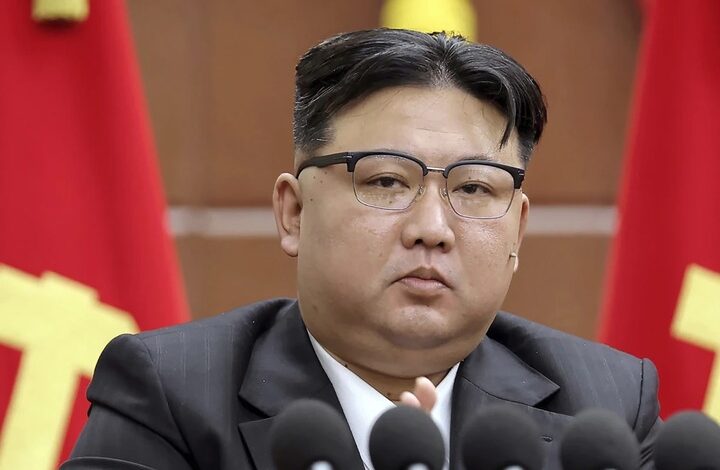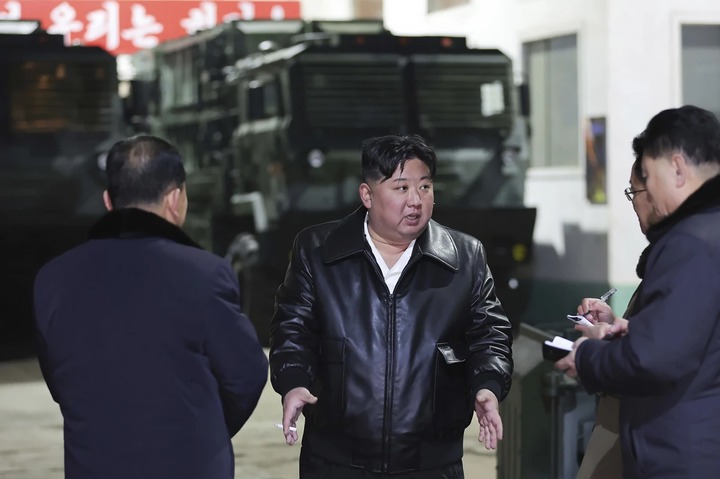
In the shadow of heightened tensions on the Korean Peninsula, North Korea’s recent launch of cruise missiles into its western waters has ignited a nuclear standoff, amplifying concerns for the United States, South Korea, and Japan.
This provocative move, the second such event this year, follows North Korea’s test-firing of its inaugural solid-fuel intermediate-range ballistic missile. As North Korean leader Kim Jong Un accelerates weapons development, a palpable unease grips the region, propelling the U.S., South Korea, and Japan into joint military exercises viewed by Kim as invasion rehearsals.
The Associated Press, on January 24, reported the intensification of deterrence strategies involving nuclear-capable U.S. assets.

In response to the deepening standoff, the three nations have engaged in combined naval exercises, a visual display of strength against North Korea’s assertive actions. Yet, the hermit state remains undeterred, testing an alleged nuclear-capable underwater attack drone and placing the blame for regional tensions squarely on its rivals. The evolving arsenal, including cruise missiles, poses a significant threat to South Korea and Japan.
Flying like small airplanes and navigating challenging terrains that defy easy radar detection, these weapons, while not explicitly banned under U.N. sanctions, are recognized for their potential danger. ( 📈 20 Eerie, Unsettling, and Anxiety-Inducing Images That Prompted a Strong Urge to Toss My Laptop Into the River )
Since 2021, North Korea has conducted tests of long-range cruise missiles, claiming a range of 1,500 kilometers, placing Japanese and U.S. (news-us.feednews.com) military installations within striking distance.
The added complexity arises from the North’s intent to equip these weapons with nuclear capabilities, further escalating the volatile situation. Analysts speculate that North Korea may exploit heightened tensions during a U.S. election year to enhance its bargaining power in future negotiations. Renowned American war analysts Robert L. Carlin and Siegfried Hecker express a grave concern, suggesting that Kim might be contemplating an invasion, potentially targeting South Korea.
“We believe that, like his grandfather in 1950, Kim Jong Un has made a strategic decision to go to war,” warn Carlin and Hecker. Kim’s recent abandonment of the goal of peaceful unification with South Korea, coupled with escalating threats, underscores the regime’s determination to solidify its nuclear status.
As Pyongyang seeks direct negotiations with Washington, its actions aim to undermine South Korea’s influence in the regional nuclear standoff. Kim’s accusations branding South Korea as “top-class stooges” of the Americans and the directive to rewrite the North’s constitution further accentuate the regime’s aggressive stance.
The international community observes with apprehension as North Korea’s provocative actions and evolving weaponry add layers of complexity to an already precarious situation. ( 📈 “Trump Is Aging Very Fast” Americans Warned As Trump Makes Another Blunder ) ( 🔗 Governor Abbott Unveils Major Declaration Following Supreme Court Decision Regarding State Border ) The potential consequences of these developments remain uncertain, heightening the urgency of diplomatic efforts to prevent further escalation in this enduring geopolitical challenge.
The world watches, recognizing the critical importance of navigating these turbulent waters with diplomacy and foresight to avert the ominous specter of heightened conflict in the region.

